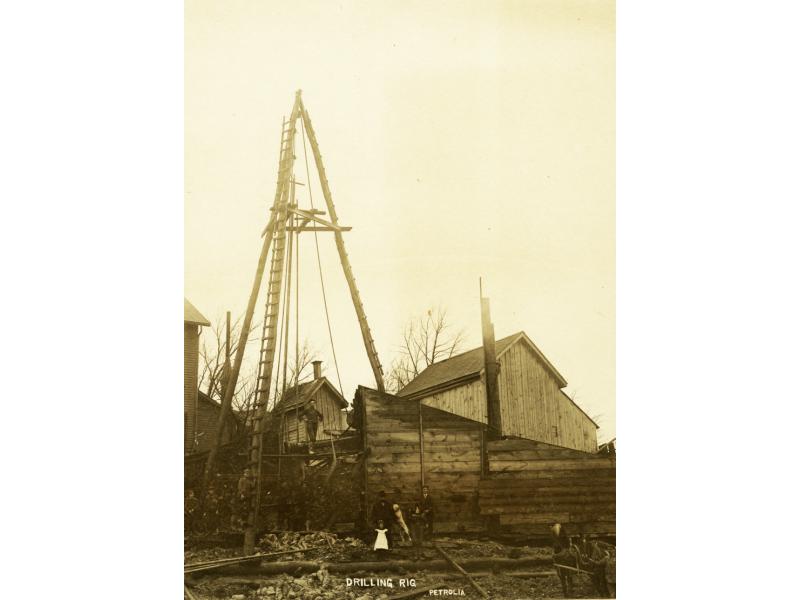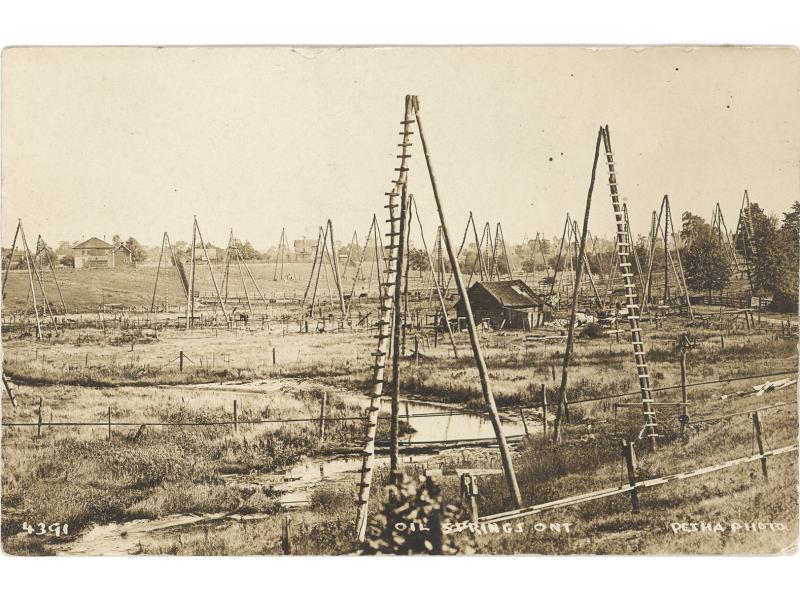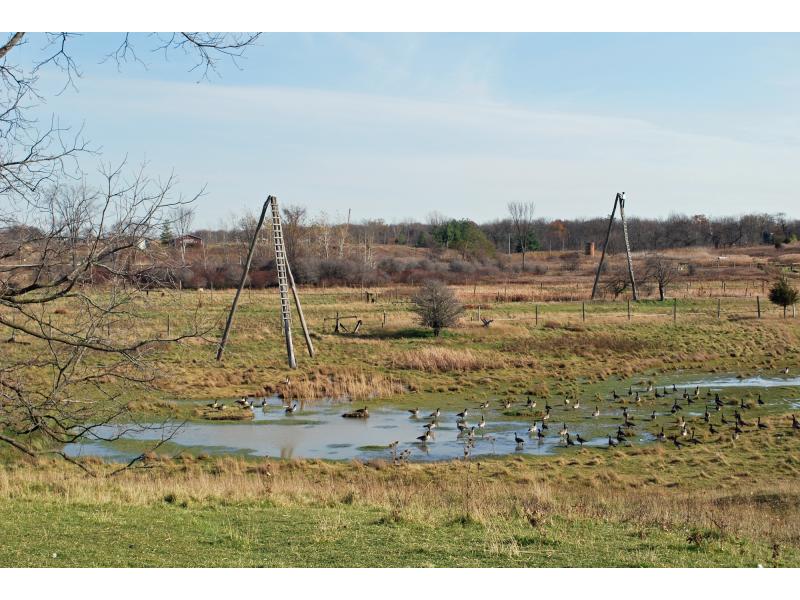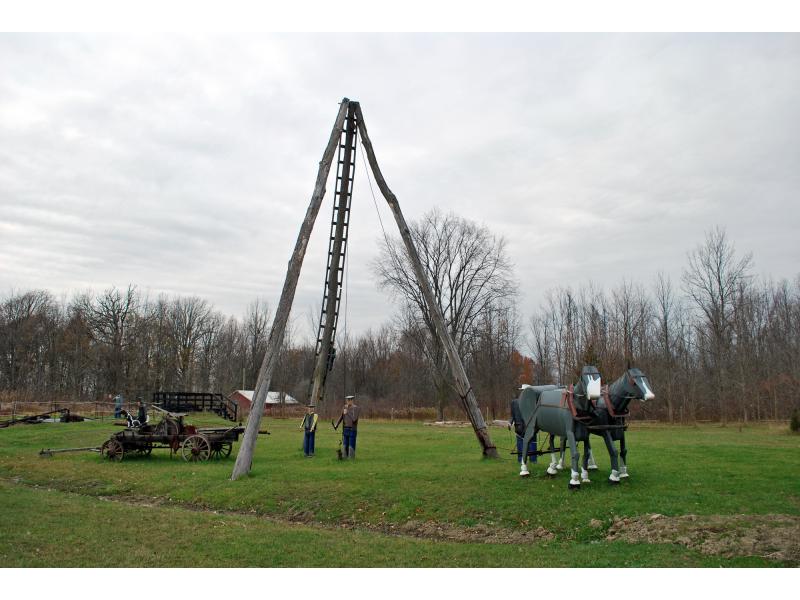After an oil well was drilled and the pump and series of rods installed in the well, a three-pole derrick was erected over the well to help with repairs. The equipment used to pump the wells was very heavy and the three-pole derrick acted as a type of crane to pull the long lengths of rod attached to the pump.
The three-pole derricks were constructed of the black ash which grew in abundance in the swampy landscape of Lambton County. Black ash was strong, grew thin and tall, and would crack rather than rot with age making it the perfect material for the tall structures.
Each derrick required three trees, roughly a foot in diameter and about 40 feet in length in order to lift the rods, which came in 35-foot lengths, out of the well. The three lengths of black ash were laid out on the ground with their tops secured together by an iron clevis. Two of the bases were secured to the ground twelve feet from the centre of the well and at 60 degrees from each other. A weighted rope was tied to the top of the three poles which acted as a plumb bob as a team of horses pulled the derrick up into place until the top of the derrick was precisely over the centre of the well. Wooden strips were nailed to one leg of the derrick to act as a ladder so that a man could climb up and attach a pulley to the top of the derrick.
Horses were used once again when it was time to pull the equipment out of the well for inspection and maintenance. A cable was tied to the top of the pump, through the pulley at the top of the derrick, onto another pulley at the base of one of the derrick legs, and finally to a team of horses. As the horses walked away from the derrick, they would pull the pump up.
At one time, Oil Springs was a forest of three-pole derricks. Unfortunately in the early 1950's, a strong wind storm blew many of them over. The horse culture at that time was also dying out and so, rather than replace the derricks, many oilers began to use portable drilling machines.



 Dozens of three-pole derricks once dotted the landscape near Oil Springs. Note the pumping rig beneath the centre derrick.
Dozens of three-pole derricks once dotted the landscape near Oil Springs. Note the pumping rig beneath the centre derrick.  A three-pole derrick set up over a drilling rig in Petrolia
A three-pole derrick set up over a drilling rig in Petrolia  Three-pole derricks on the flood plain of Black Creek.
Three-pole derricks on the flood plain of Black Creek.  The view today of the flood plain of Black Creek (same as the previous postcard). These three-pole derricks were rebuilt by the Fairbank family to mark the location of significant wells in the early history of the area.
The view today of the flood plain of Black Creek (same as the previous postcard). These three-pole derricks were rebuilt by the Fairbank family to mark the location of significant wells in the early history of the area.  Three-pole derricks were hauled into place by a team of horses. Horses were then used to pull the pump out of the oil well for repairs.
Three-pole derricks were hauled into place by a team of horses. Horses were then used to pull the pump out of the oil well for repairs.
Add new comment